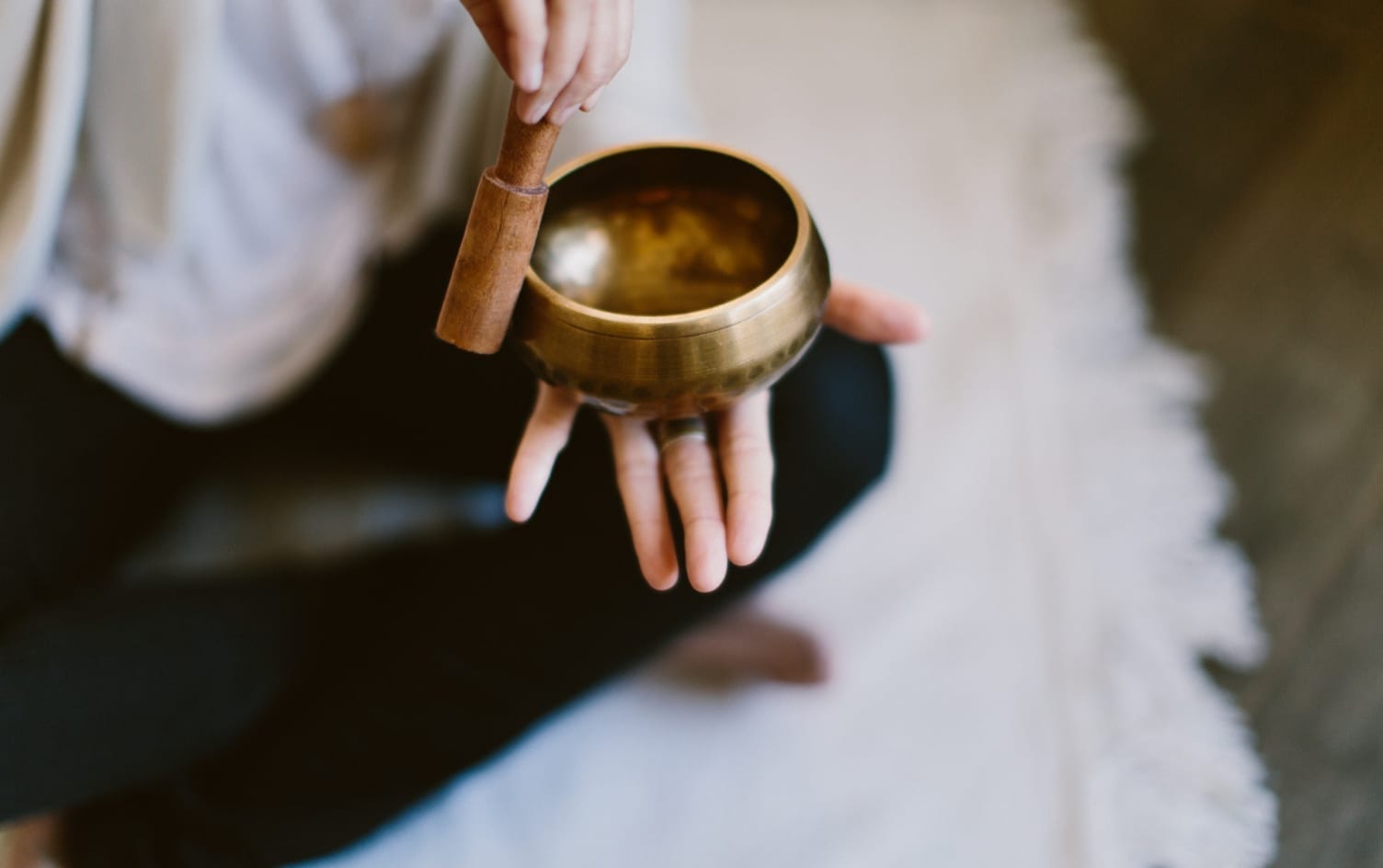Imagine lying in a dark room with nothing but the vibrational sounds of different instruments to keep you from thinking about that looming project deadline, your baby niece or what to have for dinner. It’s just you and several others kind-of-but-not-quite napping as someone plays sound bowls and maybe some gongs or cymbals.
That’s the experience of a sound bath or sound meditation. Offered with increasing frequency at yoga and meditation studios, the ancient practice of using sound to heal may seem bizarre, but science shows you may reap a lot of benefits from trying it.
WHAT IS A SOUND MEDITATION?
A sound meditation uses vibrational instruments to elicit a relaxation response in the body, explains Tamara Goldsby, PhD, a research psychologist with the University of California, San Diego. You lie on the floor on a yoga mat, pad, blankets, pillows — whatever the studio may have to help you be comfortable. Then someone or a group of people plays instruments called Tibetan or Himalayan singing bowls and oftentimes some other instruments such as gongs or small bells. As the sound plays, you may even feel the vibrations from the instruments in your body.
But you don’t just lie there. “We encourage making it an active experience,” says David Shemesh, co-founder of WOOM Center in New York City, which offers sound meditation. “When we listen, we are completely present in what we are doing now, and that heightens our perception and awareness. As you meditate and sit with yourself, listening to the sounds around you, you can examine your thoughts” and, over time, change your inner dialogue.
THE BENEFITS OF A SOUND MEDITATION
Like other meditation, “immediately after, the most common thing everyone feels is very relaxed and at peace, and that continues the rest of the evening if you do it at night,” Goldsby says of sound meditation.
In a study published in the Journal Evidence-Based Complementary and Alternative Medicine, Goldsby invited 62 adults to experience an hour-long sound meditation. Before and after the session, they answered questions about their mood, tension, anxiety, physical pain and spiritual well-being. Every factor improved after the meditation.
In a separate small study, listening to Himalayan singing bowls before a guided meditation reduced heart rate and blood pressure more than listening to silence before the meditation did. And other research found sound meditation may even improve memory and cognition.
“Sound meditation elicits the relaxation response,” Goldsby explains. “The muscles relax, the heart rate and blood pressure lower, the immune system kicks back up to normal functioning, and your digestion starts functioning better. The whole body is in a better healing mode.”
The singing bowls may also create binaural beats: When your brain hears two different frequencies, it actually interprets it as the frequency equal to the difference between those two tones. Binaural beats have been shown to increase the activity of delta brain waves, which are associated with deep sleep.
GET THE MOST FROM A SOUND MEDITATION
These studies are small and, since Goldby’s lacked a control group, she plans to do more research measuring what changes sound meditation may cause in things like blood pressure, cortisol levels and brainwaves, as well as how long the effects of a sound meditation last and how often it’s necessary to go to continue the benefits.
However, there isn’t any harm in seeing if you slip into a peaceful meditative state in a sound meditation. And, given how stressed most of us are, any relaxation is a good thing.
Shemesh suggests going to a sound meditation two or three times in a month and seeing how you feel both immediately after the experience and the next few days after. During the meditation, listen to the sounds and, if you find yourself having thoughts, bring your attention back to the sounds.
Be aware that, depending on the length of the meditation, you may experience thoughts, images or feelings about past grief, traumas or other challenging circumstances, Shemesh says. “Talk to yourself in a compassionate voice, and show yourself forgiveness when needed,” he says.
Or you could lose track of time or where you are or fall asleep. No worries — you’ll still reap the benefits, according to Goldsby.




